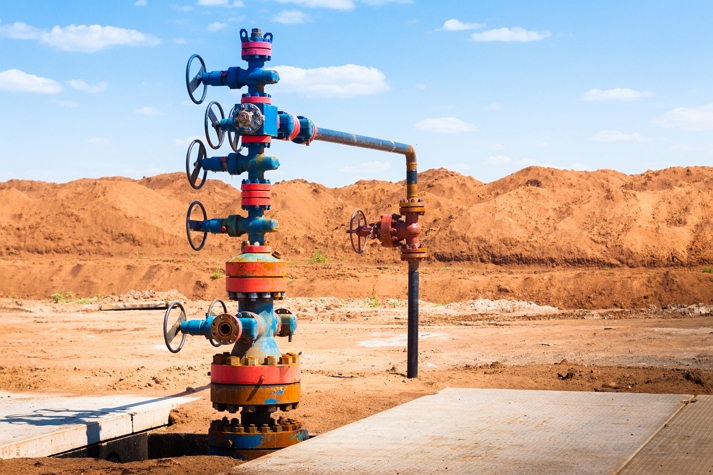In the oil and gas industry, gathering systems play a critical role in the transportation of hydrocarbons from production sites to processing and transportation facilities. These systems consist of pipelines, pumps, compressors, and other infrastructure that collect and transport raw oil and gas from production facilities to central processing plants or storage terminals.
The efficiency and reliability of gathering systems are important for maintaining a seamless flow of production and ensuring that hydrocarbons are processed, stored, and transported safely and cost-effectively.
Gathering systems serve as the vital link between the production sites and the processing facilities. Without an efficient gathering network, production would be stranded, and the oil or gas would not reach its intended destination for further use.
#What are gathering systems?
Gathering systems are an essential infrastructure in the energy industry. They form a network of pipelines, compressors, and storage facilities that work together to efficiently collect and move hydrocarbons over varying distances.
To learn more about the key components, read “The Role of Gathering Systems in Oil and Gas: Why They’re Essential”.
Gathering systems can be broadly classified into two types based on the type of resource they transport such as gas gathering systems (for natural gas) and liquid gathering systems (for crude oil and produced water).
Gas gathering systems
These are specifically designed to transport natural gas from production sites to central processing plants or transportation pipelines.
These systems handle the transportation of raw, unprocessed natural gas, which often includes impurities like water vapor, hydrogen sulfide, carbon dioxide, and other hydrocarbons.
These impurities need to be removed at the processing facilities before the gas is transported to end users.
Liquid gathering systems
These are designed for the transportation of crude oil, produced water, and sometimes other liquid hydrocarbons from production sites to central processing facilities.
Unlike gas, liquids flow naturally through pipelines under gravity or with the help of pumps.
Pumps are used to push crude oil through pipelines, especially when the natural flow pressure is insufficient to move the liquids efficiently.
Learn more about Oil and Gas Gatherers.
#How do gathering systems work?
These systems operate through a series of steps, beginning with the collection of raw resources and continuing from the wells to the processing facilities.
Collection at Wellheads
This is the starting point of production, where oil, gas, and other fluids (like water) are extracted from the subsurface reservoirs.
Oil wells use mechanical pumps or rely on natural pressure to bring crude oil to the surface.
Gas wells allow natural gas to flow to the surface due to the pressure of the reservoir.
Once the resources are brought to the surface, they are collected in production facilities or near wellheads. Then comes the process of initial separation.

Initial Separation
Once the raw resources (oil, gas, and water) are brought to the surface, separation processes are used to eliminate unwanted components.
Oil-Water Separation: At the wellhead a separation unit is used to separate oil from produced water, gas, and other impurities. The separator allows the oil to float to the top, water to settle at the bottom, and gas to be separated and sent for processing.
Gas Treatment: Natural gas at the wellhead usually has contaminants (such as hydrogen sulfide, CO2, or water vapor), which need to be removed before it can be transported. This may be done through dehydrators or sulfur recovery units located near the wellhead.
Once separated, the different resources are ready for transportation through gathering systems.
Transportation
Oil Pipelines: Crude oil is transported through pipelines, usually over short to medium distances, from the production site to central processing facilities, storage tanks, or transportation hubs.
Gas Pipelines: Natural gas is transported through smaller gas gathering pipelines. Compressors are often used to maintain the pressure and flow of gas along the pipeline.
Produced Water Pipelines: Produced water, a byproduct of oil and gas production, is transported separately via pipelines. It can be treated, reused, or even disposed of.

Furthermore, effective monitoring and safety systems are essential for the integrity of gathering systems. They ensure the safe operation of pipelines, prevent environmental hazards, and maintain consistent flow.
Various monitoring technologies are used to ensure the integrity of the pipelines. These can include:
Pressure and flow sensors to detect irregularities in the system.
Smart pigging tools that run through pipelines to detect internal issues like corrosion, leaks, or blockages.
Acoustic sensors to detect leaks by listening to the sound of escaping gas or liquid.
Also, in the case of a leak, rupture, or safety hazard, automatic shut-off valves are used to isolate sections of the pipeline and prevent the spread of issues.
#Why are gathering systems critical?
These systems provide essential infrastructure that ensures resources are moved safely, economically, and in an environmentally responsible manner.
They significantly reduce the reliance on truck hauling as they streamline the process by using pipelines which are designed to transport large volumes of raw oil, gas, and produced water continuously.
This allows producers to avoid using trucks, which are limited by capacity and are more time-consuming.
Efficient systems have a direct, positive economic impact on the energy industry. They offer lower per-unit transport costs as compared to trucks, which ultimately leads to higher profitability for producers.
Trucking operations can lead to delays due to logistical issues. Meanwhile gathering systems are more reliable, ensuring consistent transport of raw resources.
Gathering systems play a key role in improving the environmental sustainability of oil and gas operations by reducing harmful emissions and waste products, including flaring and venting.
These systems capture and transport natural gas, which reduces the need for flaring.
This not only minimizes waste but also helps reduce the environmental impact of greenhouse gas emissions caused by burning off natural gas.
They help prevent venting by ensuring gas is directed to processing facilities or pipelines, (where it can be treated or sold) rather than being released into the environment.
#Challenges and innovations in gathering systems
These systems face several challenges due to the nature of the industry, the infrastructure, and environmental considerations.
One of them is aging infrastructure. Many gathering systems, particularly those that have been in use for decades, suffer from corrosion and wear due to prolonged exposure to harsh conditions.
There is also a geographical barrier due to difficult terrain. Building pipelines in such regions is challenging and it may be expensive as well as time-consuming to install the necessary infrastructure.
The use of smart technology is now becoming common to overcome these challenges. These include the following:
Smart pigging technology uses intelligent devices (called "pigs") that travel through pipelines to inspect their internal condition.
These devices can detect issues such as corrosion, cracks, leaks, and blockages, allowing for early detection of potential problems.
Advanced SCADA (Supervisory Control and Data Acquisition) systems and IoT (Internet of Things) sensors enable real-time monitoring of pipeline pressure, flow rates, and temperature.
Furthermore, there is a growing demand for green technologies that minimize the environmental impact of gathering systems.
Some innovations aim to reduce emissions and waste, including solutions for capturing and transporting natural gas that would otherwise be flared or vented.
For instance:
Gas Recovery and Compression Technologies: This captures and compresses gas for transport, allowing it to be used or sold rather than wasted.
Carbon Capture and Storage (CCS): These capture carbon dioxide emissions from natural gas and oil production processes; preventing them from being released into the atmosphere.




